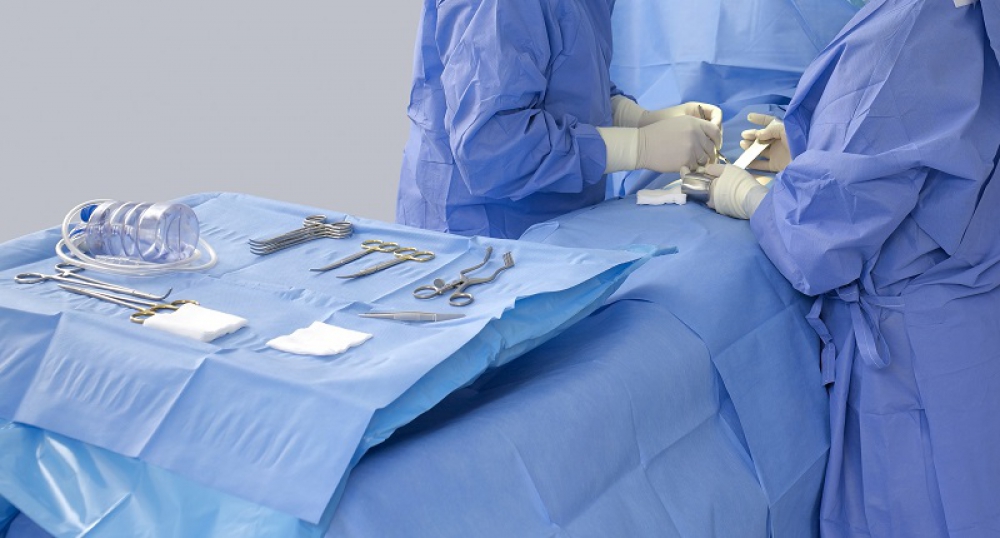
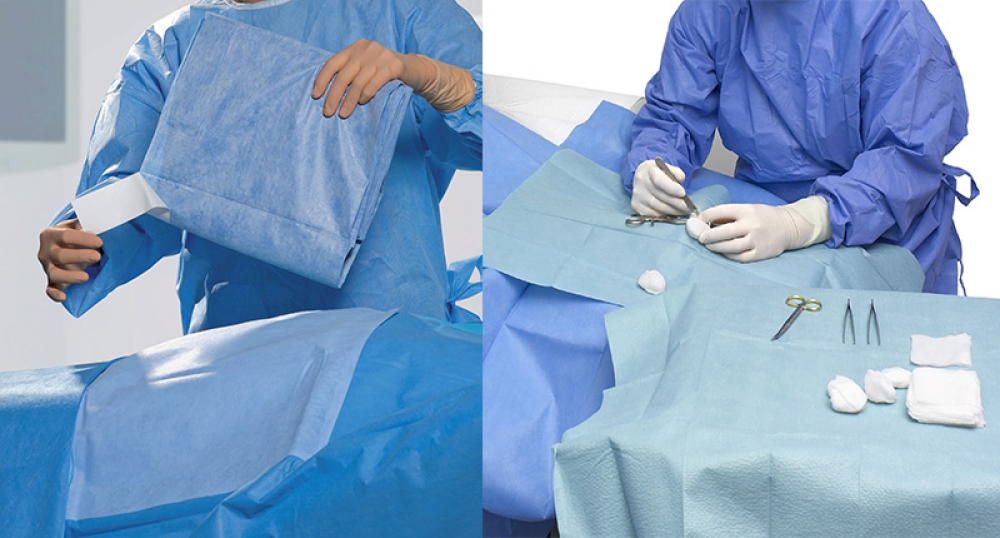

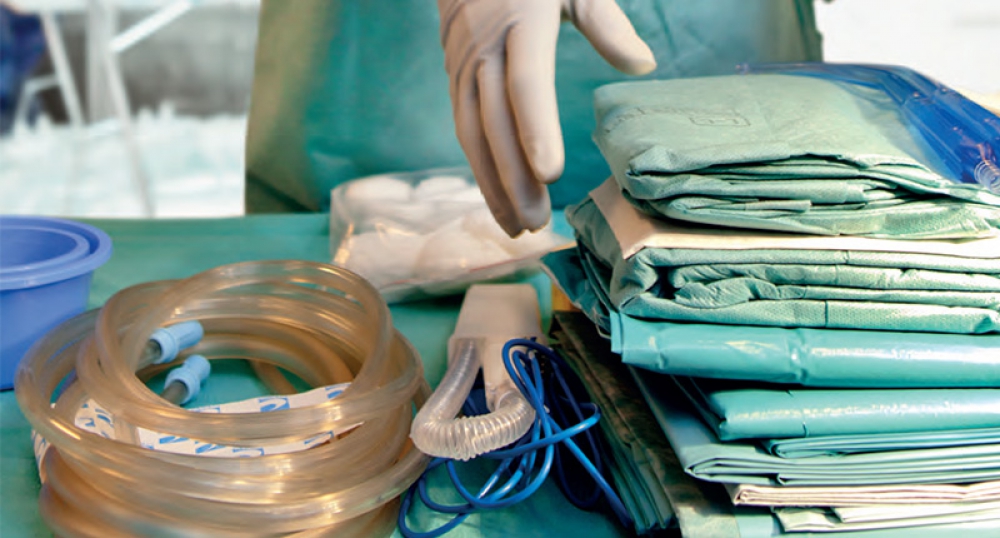
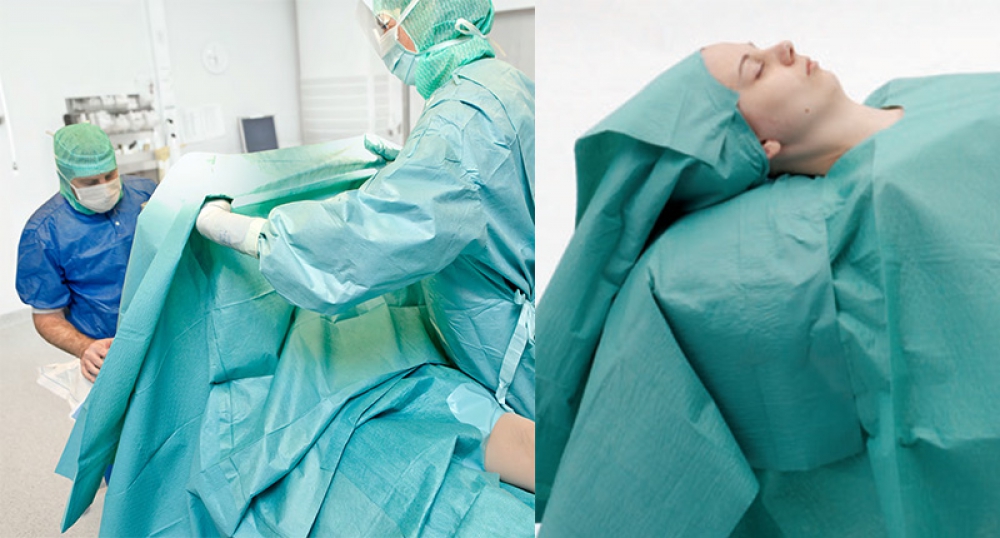
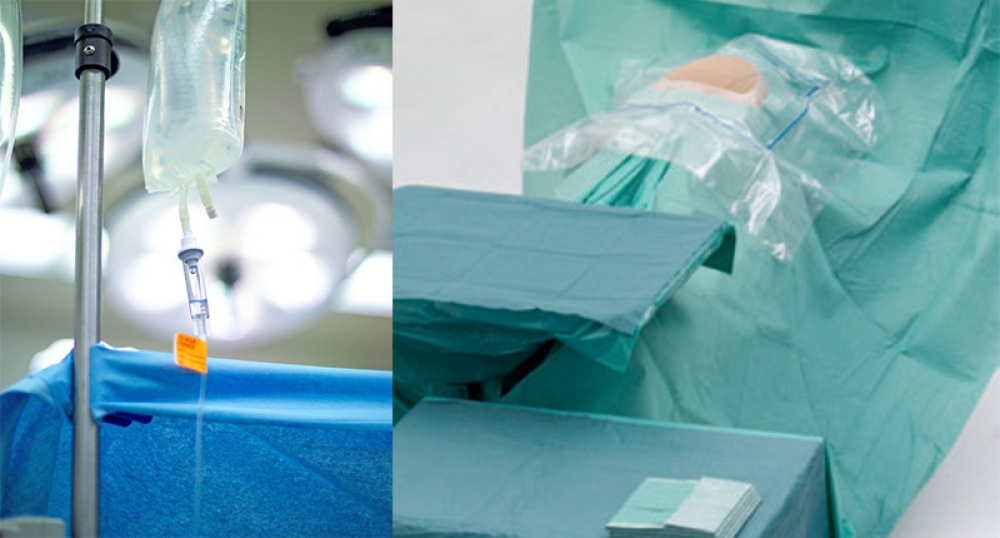
We provide a wide range of nonwoven products for medical sector. The raw materials we develop and manufacture are considered as the innovation leader in the market. We develop and manufacture spunbond nonwovens, film, laminated products for disposable drapes, gowns and disposable surgical sets. Our spunbond nonwoven products are used in products such as disposable drapes, gowns, visitor’s gowns, doctor caps, galoshes and masks. Our custom designed and manufactured products of disposable drapes; Spunsper54 (spunbond biflex) and Spunsper63 (spunbond triplex) are used as a disposable drape/compress in end-use surgeries. In addition, medical laminated products for A Class segment are manufactured with our Viscose Biflex and Viscose triplex barrier and breathable film laminated products.
The standards regarding surgical fabrics are determined by EN 13795 and AAMI. Based on these standards, the drapes are categorized as per their classes and minimum requirements are set for each class. High performance and 4th level viral barrier products provide the top-quality protection.
However, re-usable/drapes or cotton fabrics known as surgical sheet fabric cannot meet these standards. In most of the European countries, it is required by the law that the fabrics meeting the requirements of EN 13795 should be used in surgeries which takes more than two hours. Acting as barrier agents between sterile and non-sterile areas, surgical clothes are designed in order to prevent infection, and used as personal protective equipment so as to minimize the transmission of the viruses, bacterias, pathogenes to patients and health care personnel, particularly due to the exposure to blood-borne transmissions through pathogens.
When compared to reusable products, disposable products have superior quality.
The rate is also very low for public hospitals. When compared to reusable ones, disposable fabrics have barrier feature and preventative effect against the forming of hospital-acquired infection (nosocomial infection). The studies of infection rates following the surgical operations, are carried out by a variety of institutions in Turkey. In addition, model symposiums, such as DAS (Disinfection Antisepsis Sterilization), are held. In short, it is advisable to use disposable surgical fabrics in operations with more than two hours and usage of disposable drapes and gowns make up more than 70% of total operations in U.S, Germany, France, Spain, Portugal and Japan.
When compared to disposable ones, the reusable fabrics have many disadvantages; they do not have a barrier feature which, in turn, increases the rate of getting an infection, they cause linting-skin rash, increase infection risks that may be formed due to incorrect washing and sterilization and allergy risk and cannot provide thermal and kinetic comfort and etc. On the other hand, the advantages of disposable surgical drape fabrics are that they form a solid barrier, do not develop linting and pilling, have flame-retardant and antistatic properties, hold liquids owing to absorbent feature and are light and user-friendly and etc.
What are the features of an Ideal Surgical Drape? It should;
- Be resistant to liquids with its barrier feature
- Be resistant to humidity and bacterial penetration
- Be resistant to punctures, tears and wear
- Not form linting, pilling and dust
- Be flame-retardant and antistatic
- Be free from all toxic substances
- Be porous-free and tightly woven
- Preserve body temperature
- Be compatible with sterilization processes
- Be ergonomic, conform to size and positions
- Be cost effective

